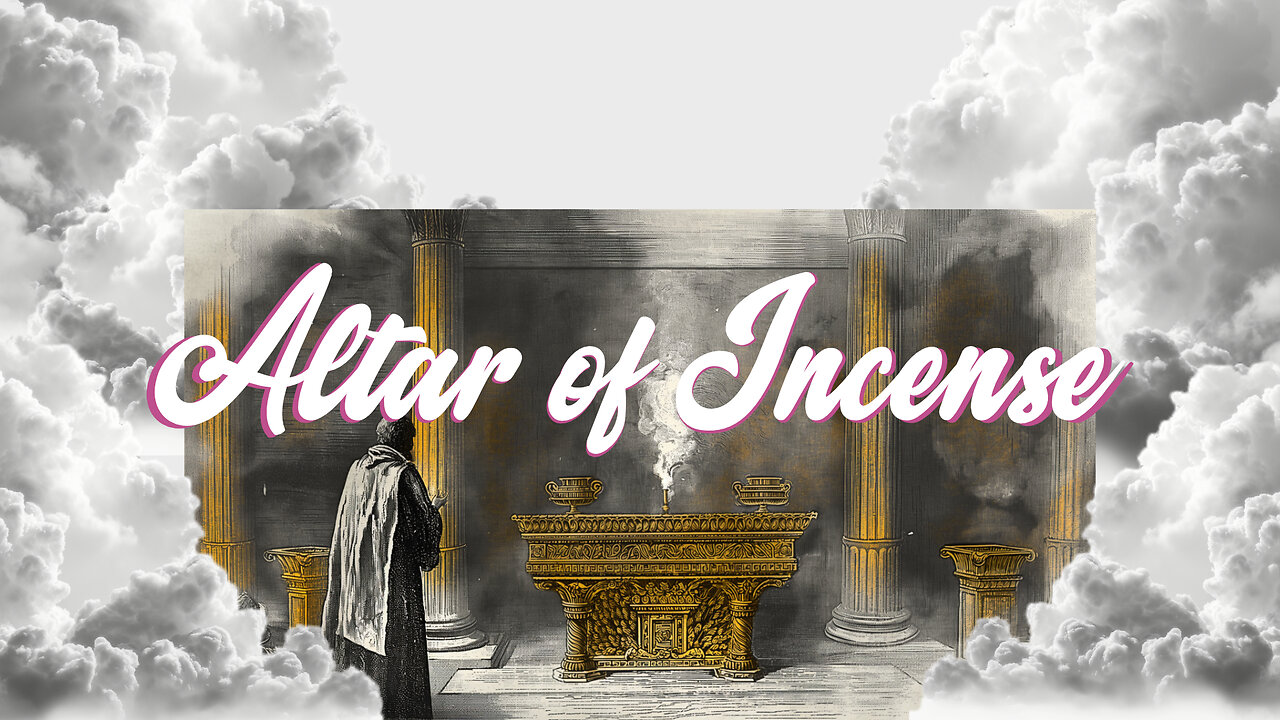Premium Only Content

Altar of Incense | June 08, 2024 | Worship Communion
Altar of Incense | June 08, 2024 | Worship Communion/PHB
The journey through the ten plagues in Egypt culminated in a powerful moment of liberation for the Israelites. Their exodus from Egypt and crossing the Red Sea led them into the wilderness and ultimately to Mount Sinai. God’s intention was for the people to come up to the mountain, but they were unprepared and fearful, choosing instead to send Moses to speak with God on their behalf.
God’s desire was to make Israel a kingdom of priests, but their unbelief and fear obstructed this plan. Despite the opportunity to come directly to Him, they doubted and sent Moses, resulting in a change in the divine approach. God instructed Moses to build a tabernacle, a physical representation of the divine presence, segmented into steps symbolizing the gradual journey toward God’s presence.
The tabernacle's structure, from the gate to the holy place, represented steps of spiritual progress. Each segment required specific preparations, symbolizing stages of purification and consecration. In the holy place, the only light came from the menorah, representing the Holy Spirit’s illumination, crucial for guiding believers towards deeper communion with God.
The altar of incense, placed before the holy of holies, was a significant place where prayers and intercessions were offered. This altar represented a place of deep sacrifice and beheading of self, where personal needs were set aside for the collective needs of the body of Christ. Prayers offered here were for the broader community, driven by the Spirit of God.
Believers are encouraged to persist in prayer and intercession, continually seeking God's will and striving for holiness. This involves a lifelong process of wearing the spiritual armor of God, as outlined in Ephesians 6. Each piece of armor, such as the helmet of salvation and the breastplate of righteousness, represents aspects of spiritual growth and protection necessary to stand against spiritual adversaries.
Salvation is the foundational armor, always present in the believer's mind. The righteousness of God, once received, must be worked out through daily living and overcoming temptations. This spiritual growth process involves constant engagement with God’s word and the Holy Spirit, leading to tangible experiences of God’s power.
The narrative of the ten virgins in Matthew 25 highlights the necessity of spiritual preparedness. The wise virgins, who carried extra oil, symbolized the need for ongoing spiritual vigilance and readiness for the bridegroom’s return. This extra oil represents the continuous filling and renewal by the Holy Spirit, achieved through diligent practice of faith and righteousness.
Believers are urged to understand that spiritual growth and readiness require persistent effort and the cultivation of a deep, abiding relationship with God. This involves not just hearing the word, but actively practicing and living it out. The goal is to become a vessel fully prepared and filled with the life of Christ, ready to meet Him when He returns.
Ultimately, the journey of faith is about continually dying to self and living unto God, embracing the transformative work of the Holy Spirit. Through this process, believers are built up as a holy habitation for God, reflecting His nature and glory in their lives. The call is to persevere in this journey, ever growing stronger in faith and righteousness, and living a life that declares the goodness of God.
-

Cave Adullam Meetings
15 days agoWWW | Aug 13, 2025 | Worship Warfare
661 -
 LIVE
LIVE
Badlands Media
6 hours agoBadlands Daily: August 28, 2025
4,049 watching -
 1:43:15
1:43:15
Dear America
2 hours agoTrans Violence Against Christianity MUST BE STOPPED!!
87.1K71 -
 LIVE
LIVE
Total Horse Channel
13 hours ago2025 URCHA Futurity | Derby & Horse Show | Thursday
105 watching -
 LIVE
LIVE
Wendy Bell Radio
6 hours agoGuns Don't Kill People
7,266 watching -
 LIVE
LIVE
Matt Kohrs
9 hours agoMarket Open: New Highs or Bust?! || Live Trading Futures & Options
607 watching -
 46:34
46:34
Randi Hipper
1 hour agoWALL STREET'S CRYPTO BET REVEALED! HINT: IT'S NOT BITCOIN!
2.18K1 -
 LIVE
LIVE
The Mike Schwartz Show
1 hour agoTHE MIKE SCHWARTZ SHOW with DR. MICHAEL J SCHWARTZ 08-28-2025
4,176 watching -
 LIVE
LIVE
LFA TV
3 hours agoLFA TV ALL DAY STREAM - THURSDAY 8/28/25
4,839 watching -
 2:04:35
2:04:35
Game On!
20 hours ago $3.07 earnedCollege Football Is BACK! Week 1 Preview!
36.2K2